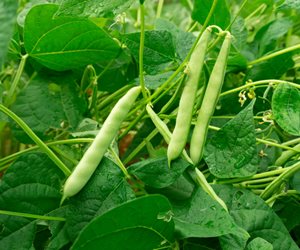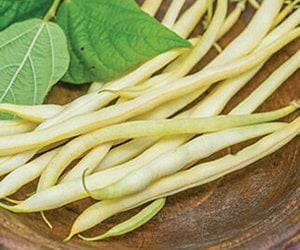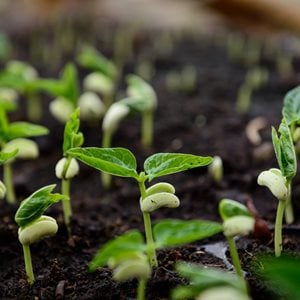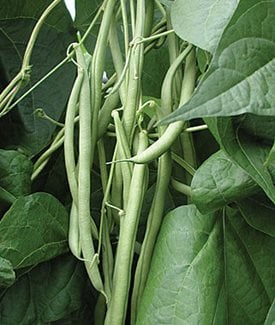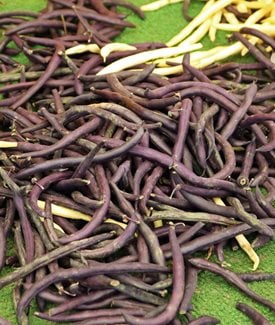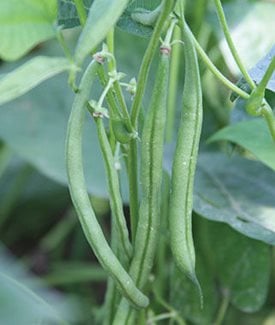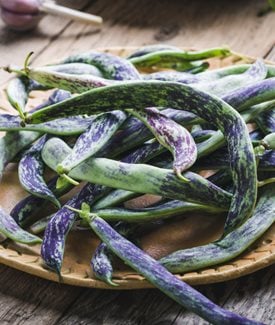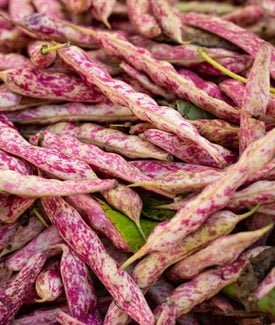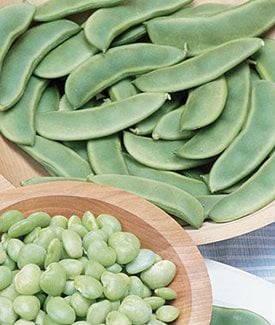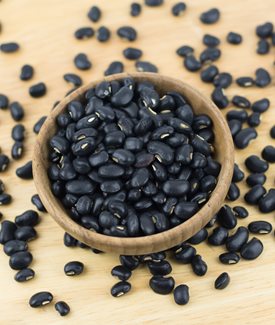HOW TO GROW BEANS IN YOUR HOME GARDEN
Grow this popular kitchen staple for year-round useBeans have been a dietary staple in cuisines worldwide for thousands of years. One of the most nutrient-dense foods, beans are rich in vitamins, antioxidants, fiber, and trace minerals. They are one of the best sources of plant-based protein, often used by vegetarians as a replacement for meat. This versatile vegetable can be used in soups, salads, side dishes, casseroles, and fillings.
Green beans are second only to tomatoes as the most popular vegetable to grow, though other types of beans can also be cultivated in home gardens. One of the easiest vegetables to grow, beans can be eaten fresh, or frozen, preserved, or dried for later use. Here’s how to get started, along with some of the most common varieties to grow and use.
On this page: Basics | Types | Planting | Care | Harvesting | Bean Varieties to Try
- BEAN BASICS
- TYPES OF BEANS
- PLANTING BEAN PLANTS
- BEAN PLANT CARE
- HARVESTING BEANS
- BEAN PLANT VARIETIES
BASICS
Botanical name:
Phaseolus
Zones:
Most beans are grown as warm season annuals.
Height/spread:
Vining or bushy habit, 2 to 15 feet tall and 2 to 3 feet wide.
Exposure:
Full sun
Color and characteristics:
- Foliage and flowers: Green heart-shaped leaves grow along short or vining stems. Small pea-like flowers come in colors of white, pink, lavender, or red.
- Beans: Elongated round or flat pods 4 to 36 inches long occur in shades of green, yellow, or purple. Seeds are round, oval, flat, or kidney-shaped in colors of green, red, purple, black, white, or pink, some with markings.
Days to maturity:
Varies by type, from 50 to 65 days
Fun garden fact:
Bean plants fix nitrogen into the soil as they grow, providing crucial nutrients for other plants.
TYPES OF BEANS
Plant types:
- Bush beans: Also known as dwarf beans, bush types don’t need support. They are determinate, producing a single harvest before dying. They are quicker growing than pole beans, taking 50-55 days to mature. Seeds can be sown every two weeks for continuous harvest, known as succession planting. The smaller stature is good for containers and small plots.
- Pole beans: Also called climbing beans, these vining beans require extra support. They take longer to mature at 55-65 days and are indeterminate, continuing to produce through the growing season. Flavor is sweeter and starchier than bush beans.
- Half-runner beans: Growth is semi-vining, reaching a height of 3 feet. These are semi-determinate and benefit from support.
String vs. stringless: Heirloom varieties develop a tough string along the joined edge, which is removed before eating or cooking. Newer varieties have been bred to have a thinner string and are called stringless beans.
Bean types:
- Snap beans are young pods harvested before seeds form. Green and wax beans are picked at this stage.
- Shelled beans are mature seeds that are harvested and eaten when they are fresh. These include lima beans, fava beans, soybeans, and chickpeas.
- Dry beans are allowed to remain on the plant and harvested after the pods have completely dried out. These include black beans, kidney beans, pinto beans, and also chickpeas.
Green bean types:
- Green beans: Also called string beans or snap beans, these are the most commonly grown. Round pods grow 6 to 9 inches long. Varieties include ‘Blue Lake’, ‘Kentucky Wonder’ and ‘Kentucky Blue’. This is also the generic term for all green beans.
- Haricots Verts: Known as French green beans or filet beans, this gourmet type is a favorite of chefs. Beans are slim and shorter, 4 to 5 inches long, with a crunchy texture and complex flavor.
- Romano: This heirloom, also called Italian green beans or flat beans, produces wide flat pods 5 to 10 inches long. It has a nuttier, sweeter flavor than other types. Varieties include ‘Roma II’, ‘Dragon’s Tongue’ and ‘Northeaster’.
- Wax: These are a yellow version of traditional green beans.
PLANTING BEAN PLANTS
When to plant beans:
Sow seeds outdoors after all danger of frost is past. Wait until soil temperature reaches 60 degrees F and air temperature is 65 to 85 degrees F. Seeds may rot if temperatures are too cool.
Where to plant:
Planting site should receive at least 6-8 hours of direct sunlight. Rotate site every year to help prevent pests and diseases.
How to plant:
Beans are best directly sown in their permanent spot, as they are shallow rooted and don’t like being transplanted.
How to plant bush beans: Plant seeds 1 inch deep at 3 inch intervals in rows 18 to 24 inches apart. Keep soil moist until germination in 10 to 14 days. When seedlings reach 2 inches tall, thin plants to 6 inches apart.
How to plant pole beans: Provide a 6 to 8 foot tall support such as a trellis, teepee, or poles before planting. Plant seeds 1 inch deep at 3 inch intervals in rows 24 inches apart for linear trellises. For teepees or poles, plant 1 inch deep, 3 to 4 seeds per pole, spaced 2 to 3 inches apart.
Planting Tips:
- To speed germination, soak seeds in water overnight.
- Too boost yields, seeds can be coated with bean inoculant before planting.
- Amend planting area by adding 2 to 4 inches of compost and working it into the soil 8 to 10 inches deep.
- Lightly moisten area before planting.
How to sow bean seeds indoors:
Sow seeds 2 to 4 weeks before your last frost-free date. Plant in biodegradable pots that can be directly planted into the garden to avoid disturbing roots.
Growing beans in containers:
Make sure containers have adequate drainage and are at least 8 to 9 inches deep for pole beans and 6 to 7 inches deep for bush beans. Bigger containers are better for retaining moisture. Use a high quality all-purpose potting mix.
Companion planting with beans:
Beans fix nitrogen into the soil, which feeds adjacent crops such as tomatoes, peppers and eggplant. They are also a component of the Three Sisters, a native American technique of planting corn, beans, and squash together for mutual benefit. Avoid planting beans near beets, sunflowers, and alliums such as garlic and onions, which can stunt growth. See more on companion planting.
BEAN PLANT CARE
Soil:
Beans prefer moderately rich soil with a slightly acidic pH of 6.0-7.0. Amend planting area with compost or other organic matter, creating loose, well-draining soil.
Water:
Keep soil moist but not soggy. Plants need 1 inch of water per week, and more during extreme hot spells. Water with drip irrigation or a soaker hose, or overhead water early in the day. Avoid splashing water on foliage to help prevent diseases. Water when the top 1 to 2 inches of soil feels dry.
Amendments and fertilizer:
Because beans fix nitrogen into the soil, use a fertilizer low in nitrogen such as 5-10-10. Apply according to package instructions. Too much nitrogen can result in lush foliage at the expense of bean production. Mulch with a layer of compost to retain moisture and suppress weeds.
Maintenance:
To prevent disease, keep foliage dry, don’t overcrowd plants and provide good air circulation. Keep planting area free of weeds, taking care not to disturb the shallow roots. Plants may stop flowering in extreme heat, but will resume flowering and production once the weather cools.
Diseases and pests:
Pests include Mexican bean beetle, spider mites, Japanese beetles, aphids, thrips, and bean leaf beetles. Diseases include anthracnose, blight, powdery mildew, white mold, bean rust, mosaic virus, and Alternaria leaf spot.
HARVESTING BEANS
Pick beans as they ripen to encourage new beans to develop, which will increase overall yields.
- Snap beans should be picked when they are about the size of a pencil and before seeds develop. Pods that are too mature will be tough and stringy.
- Shelling beans can be picked when pods are filled out and before pods turn brown.
- Dry beans can be harvested when pods begin to turn brown. Leave in the ground until pods are completely brown or pull up the entire plant and hang in a warm dry place with good air circulation until completely dry.
Post-harvest:
Spent plants can be composted or worked back into the soil to provide nutrients for next year’s crops. See more on how to make your own compost.
POPULAR VARIETIES OF BEANS TO GROW
RELATED:
Vegetable Garden Ideas
How to Grow Potatoes
Arbors, Trellises, and the Edible Garden
